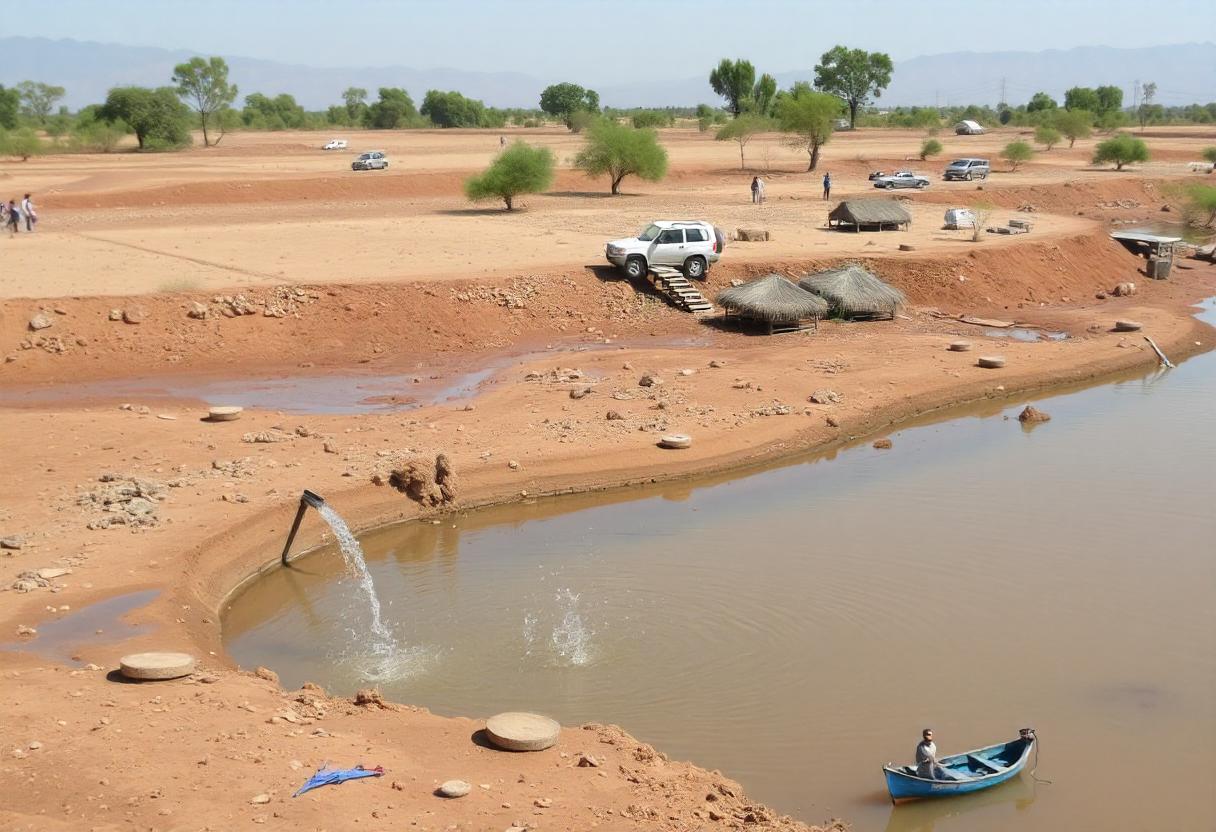
Water scarcity is an urgent issue affecting millions of people around the world. It refers to the shortage of fresh water resources to meet the demand for human consumption, agriculture, and industrial activities. With the global population rising, this critical problem is exacerbated by factors such as climate change, pollution, and unsustainable water use.
Causes of Water Scarcity
One of the primary causes of water scarcity is climate change. As temperatures rise, evaporation increases, and rainfall patterns become unpredictable. Some regions experience prolonged droughts, reducing water availability in rivers, lakes, and aquifers. The melting of glaciers, which serve as natural water reservoirs, further contributes to diminishing freshwater supplies.
Another key factor is pollution. Industrial waste, agricultural runoff, and inadequate wastewater management contaminate freshwater sources, rendering them unusable for drinking, irrigation, or other purposes. Polluted water systems are not only harmful to humans but also disrupt ecosystems, affecting biodiversity and the environment as a whole.
Overuse of water resources also plays a significant role. In many parts of the world, water is extracted at unsustainable rates to support growing populations and agriculture. Irrigation, which consumes about 70% of global freshwater, often employs inefficient techniques that waste large amounts of water. Furthermore, water-intensive industries such as textiles, food production, and energy generation put additional pressure on already strained water supplies.
Regions Most Affected by Water Scarcity
Water scarcity is a global challenge, but some regions are more severely impacted than others. Sub-Saharan Africa is one of the hardest-hit areas, with many countries facing chronic water shortages due to prolonged droughts, poor infrastructure, and growing populations. In some African nations, people must walk long distances to collect water, a task that often falls to women and children, limiting their opportunities for education and economic activities.
The Middle East and North Africa (MENA) region is another area experiencing acute water scarcity. Arid climates, political instability, and rapid population growth have made access to fresh water a persistent challenge. Some countries in the region rely heavily on desalination, which is expensive and energy-intensive, as a solution to their water woes.
South Asia, home to over a billion people, is also grappling with severe water scarcity. India, Pakistan, and Bangladesh face declining groundwater levels due to over-extraction for agriculture and urbanization. This problem is compounded by pollution in rivers such as the Ganges, which serves as a vital water source for millions but is heavily contaminated by industrial waste and untreated sewage.
The Human Impact of Water Scarcity
Water scarcity has far-reaching implications for human health and well-being. Access to clean drinking water is essential for preventing waterborne diseases such as cholera, dysentery, and typhoid. In communities without adequate water supplies, people are forced to rely on unsafe sources, increasing the risk of illness and mortality, particularly among vulnerable populations like children and the elderly.
Food security is another major concern. Agriculture depends on reliable water sources for irrigation, and in regions facing water scarcity, crop yields suffer. This leads to food shortages, rising prices, and increased hunger. Poor communities are often the most affected, as they lack the resources to cope with higher food costs.
Water scarcity also fuels conflict and displacement. As water becomes scarcer, competition for access to it can intensify, leading to disputes between communities, regions, and even nations. In some cases, water-related tensions have escalated into armed conflict, displacing populations and exacerbating the humanitarian crises in affected areas.
Efforts to Address Water Scarcity
Various strategies are being implemented to tackle water scarcity. Water conservation and the adoption of more efficient technologies in agriculture and industry are crucial steps in reducing water waste. For example, drip irrigation systems can significantly cut water usage in farming by delivering water directly to plant roots, minimizing evaporation and runoff.
Another approach is improving water management practices, such as investing in infrastructure to capture and store rainwater, repair aging water systems, and reduce leakages. In urban areas, cities are exploring ways to recycle wastewater for non-potable purposes like irrigation and industrial processes.
Desalination technology, which converts seawater into freshwater, offers a potential solution for coastal areas facing water shortages. However, the high costs and environmental impacts associated with desalination, including energy consumption and the disposal of brine, remain significant challenges.
Public awareness campaigns and education also play a critical role in addressing water scarcity. By promoting responsible water use, reducing waste, and advocating for policy changes, individuals and communities can contribute to the sustainable management of water resources.